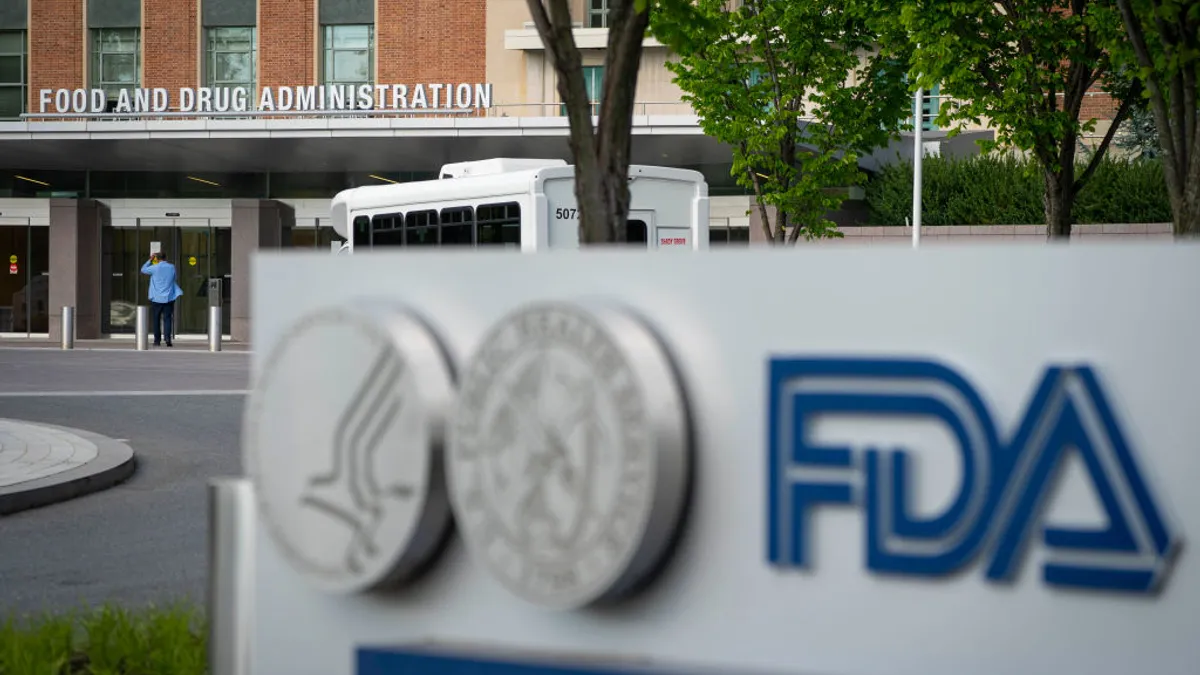Dive Brief:
- The Food and Drug Administration said Monday it has reorganized the Center for Devices and Radiological Health.
- FDA officials have restructured offices focused on communication and clinical evidence, creating a new division and turning an existing group into a “super office.”
- The FDA said the changes are intended to help the agency meet its Medical Device User Fee Amendments (MDUFA) V commitments and strategic priorities.
Dive Insight:
The FDA has restructured its drug and device operations in recent years to support its work to meet user fee goals. On the device side, the agency turned the Office of Strategic Partnerships and Technology Innovation into a super office in January. The change created new divisions within the office to raise the profile of digital health, account for the office’s growth and support the MDUFA V objectives.
Now, the FDA has made changes to the Office of Communication and Education (OCE) and the Office of Product Evaluation and Quality (OPEQ). The agency is turning the OCE into a super office and creating a new Division of Digital Communication and Marketing.
CDRH Director Jeff Shuren said in a statement that the super office designation “will allow the Center to assure that information about CDRH programs is accurately and readily shared with our customers.” The office will take responsibility for providing communications, education and disclosures about devices and radiation-emitting products to FDA employees, patients, healthcare professionals and companies.
The FDA is calling the super office the Office of Communication, Information Disclosure, Training, and Education (OCITE). Within the OCITE, the agency has established two sub-offices, one for communication and content development and another for training and education, and a digital marketing division.
At the OPEQ, the FDA is changing the structure of the Office of Clinical Evidence and Analysis (OCEA) and the Office of Surgical and Infection Control Devices (OHT4). The agency has created five divisions within the OCEA by splitting the biostatistics team into three groups. Shuren said the changes will “better align work and position OCEA and CDRH to meet the growing needs of internal and external stakeholders.”
At the OHT4, the FDA has split the Division of Infection Control and Plastic Surgery Devices into two new groups, one focused on plastic and reconstructive surgery and another that will handle infection control devices.










